Abstract
Amplitude/frequency characteristics of postural hand tremor in 59 patients with bilateral essential tremor of various degrees of severity were assessed using accelerometric recordings and spectral analysis. Intra-subject comparisons of tremor characteristics between the more and less affected hands were used to control for variability of tremor due to age factors and intersubject differences in amplitude and frequency. Statistical analysis distinguished three different patient groups. Some patients had low amplitude (less than 0.1-0.015 cm) tremor in the less affected limb (which tended to be 7 Hz or more in frequency in the young) and a larger amplitude tremor in the more affected hand which was 1 Hz or more lower in frequency. Other subjects had either bilaterally small or bilaterally large amplitude tremors of similar frequencies. These findings imply that there is a downwards step in frequency between symptomatic tremors of small and large amplitude. The amplitude and frequency of the small amplitude tremors were unrelated but frequency declined with age. The frequency of the large amplitude tremor was generally determined by amplitude but a wide range of amplitudes were compatible with similar frequencies. The frequency of large amplitude tremor also declined with age. It was concluded that there are two types of essential tremor, the smaller amplitude tremor probably derives from an exaggeration of some or all of the mechanisms of normal physiological tremor whereas the larger amplitude tremor probably arises from a separate "pathological" central nervous mechanism. It is not known if or how one may transform into, or be replaced by, the other during progression of the disease.
Full text
PDF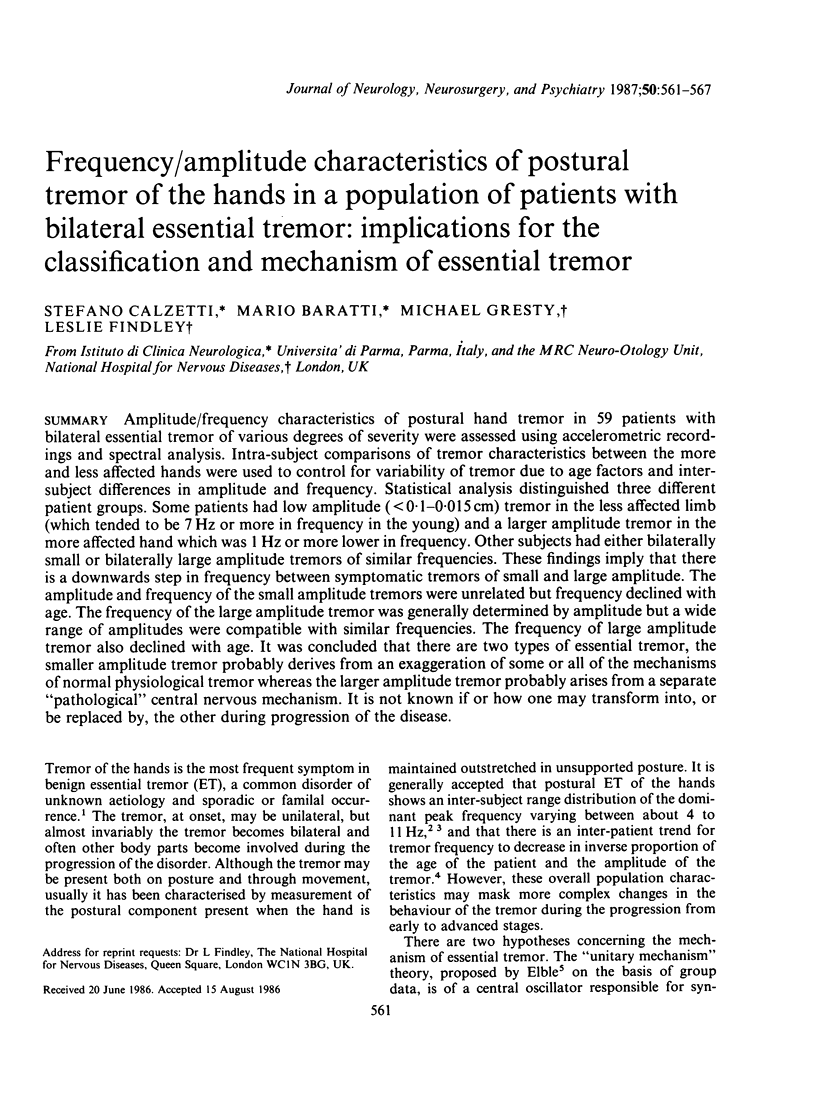
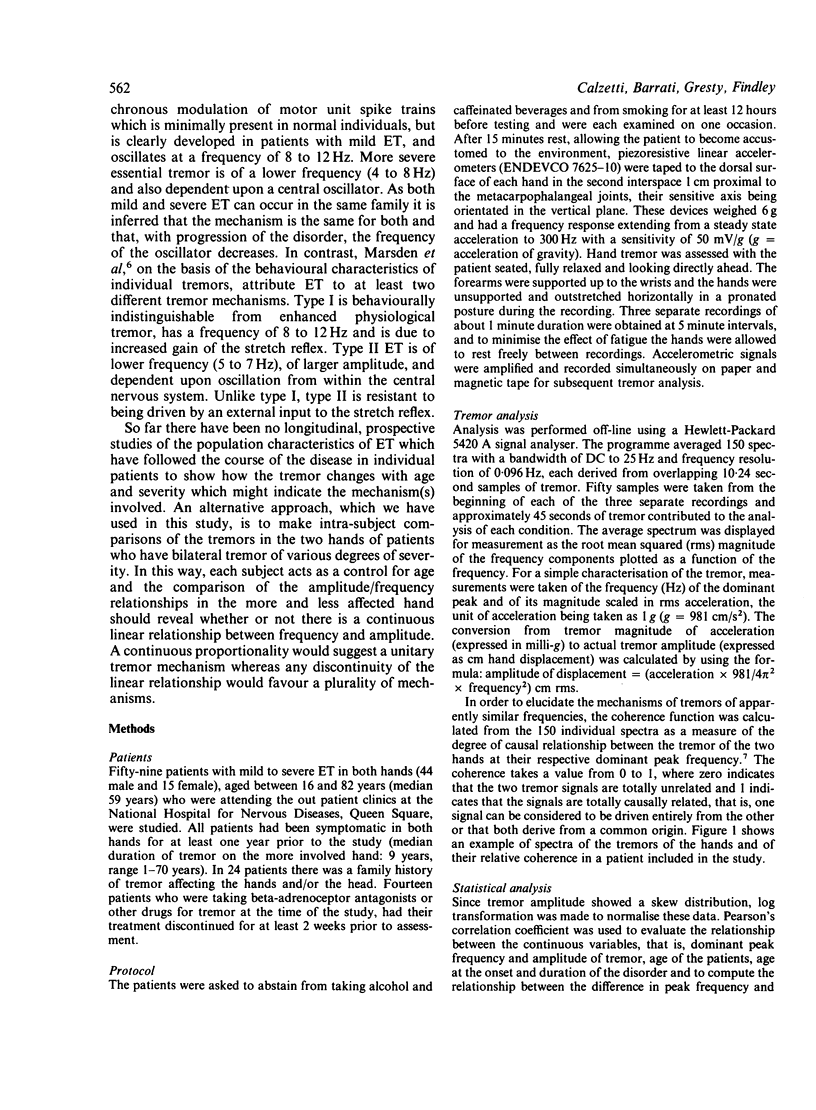
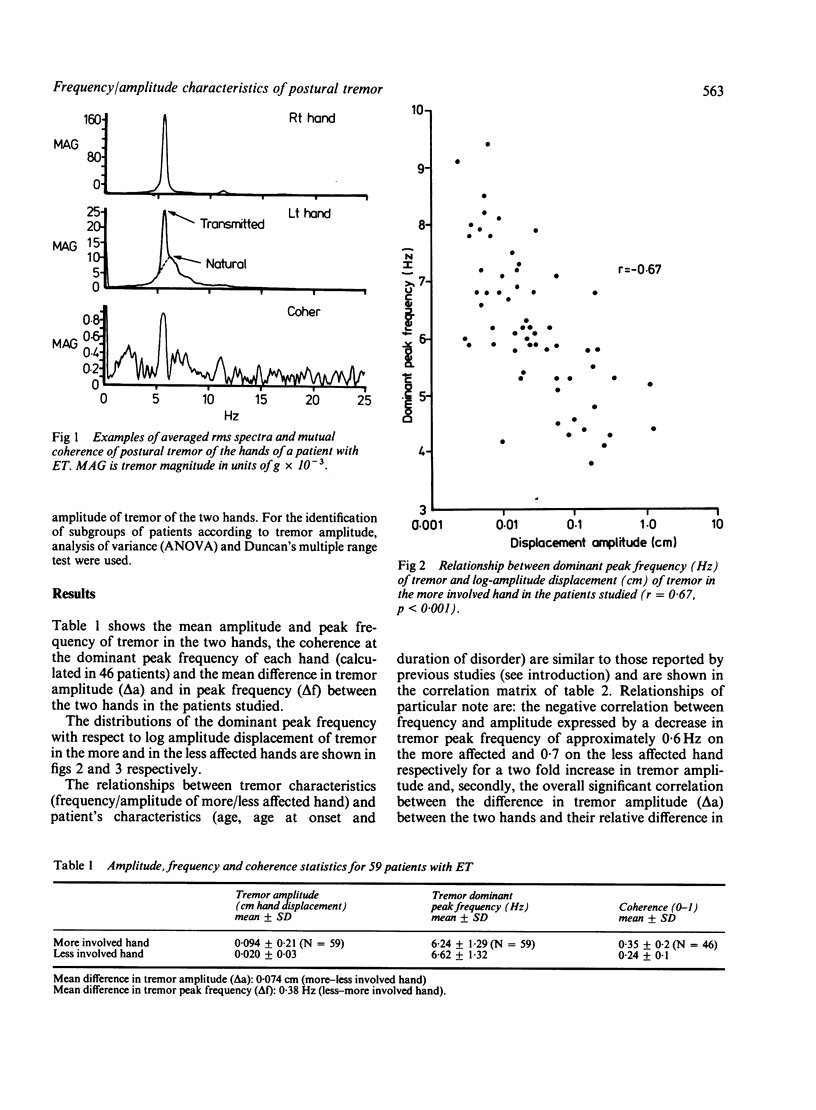
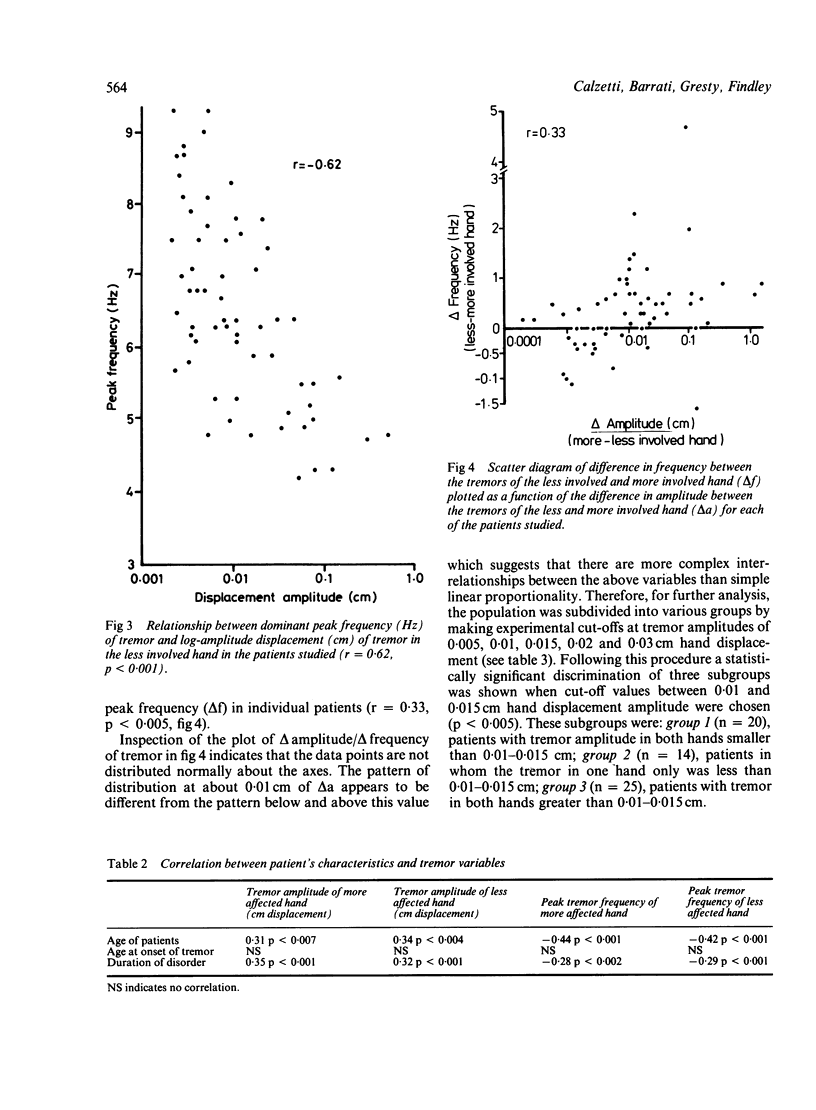
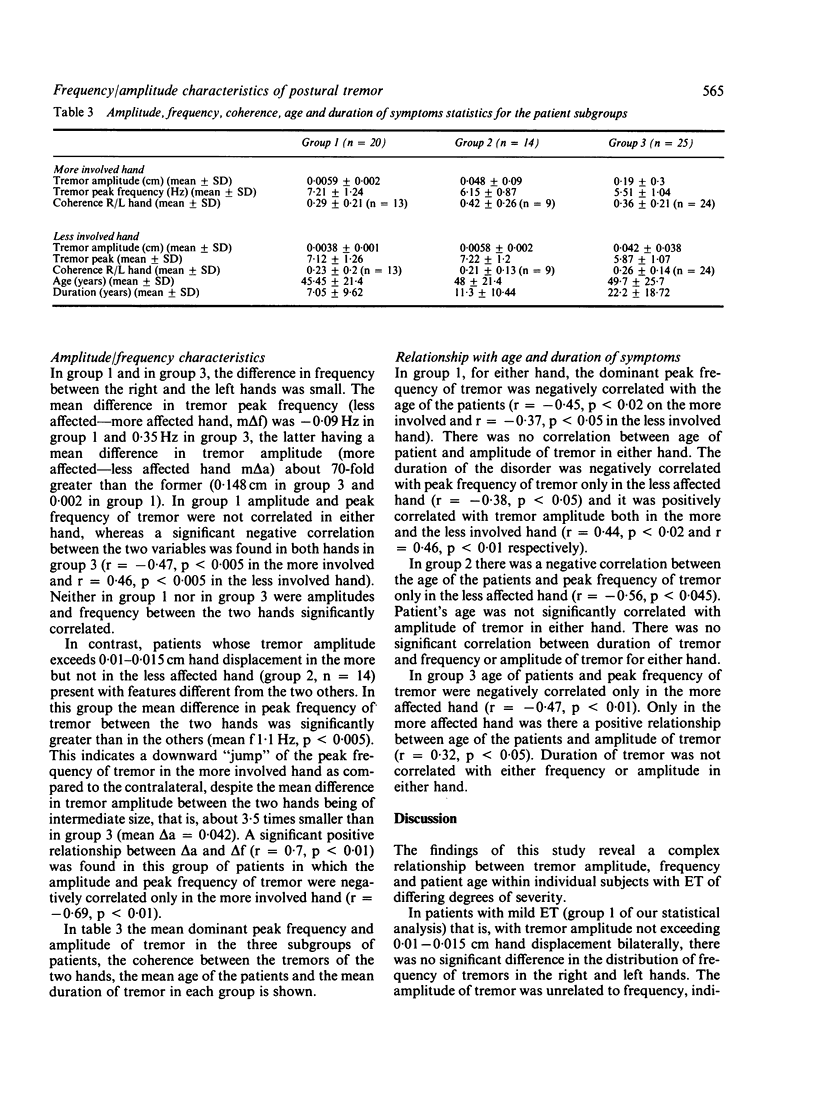
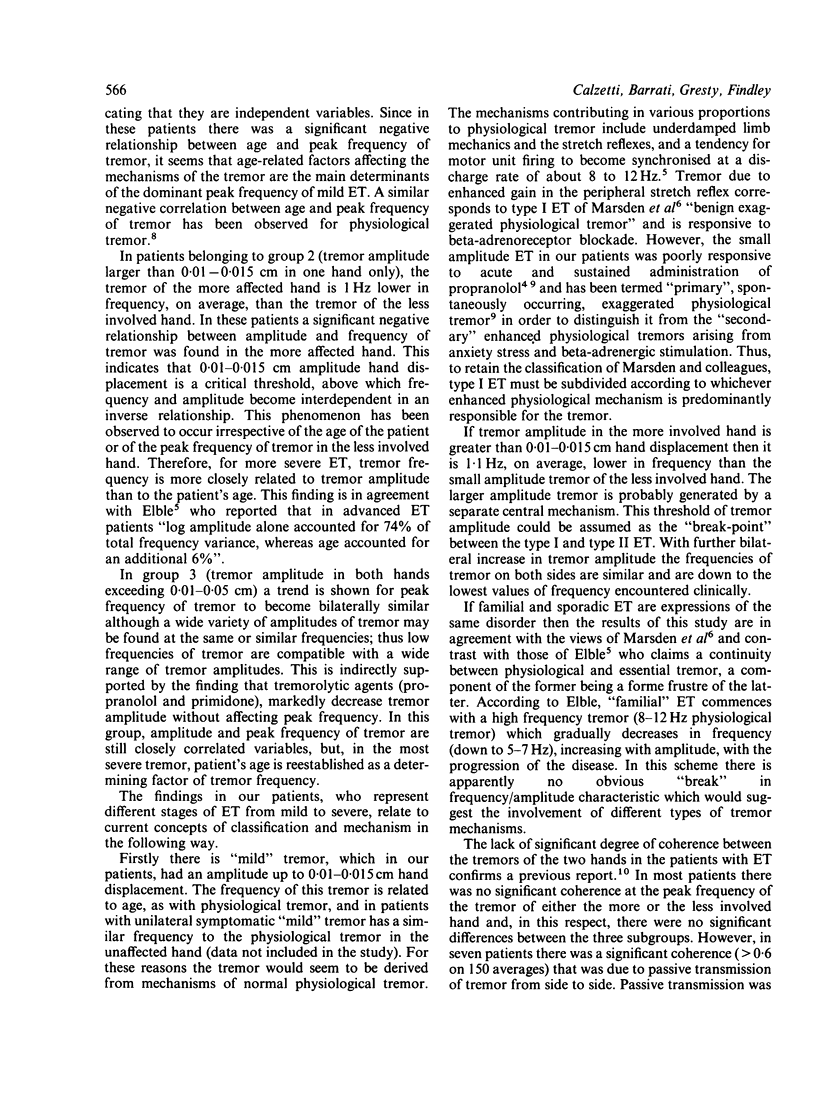
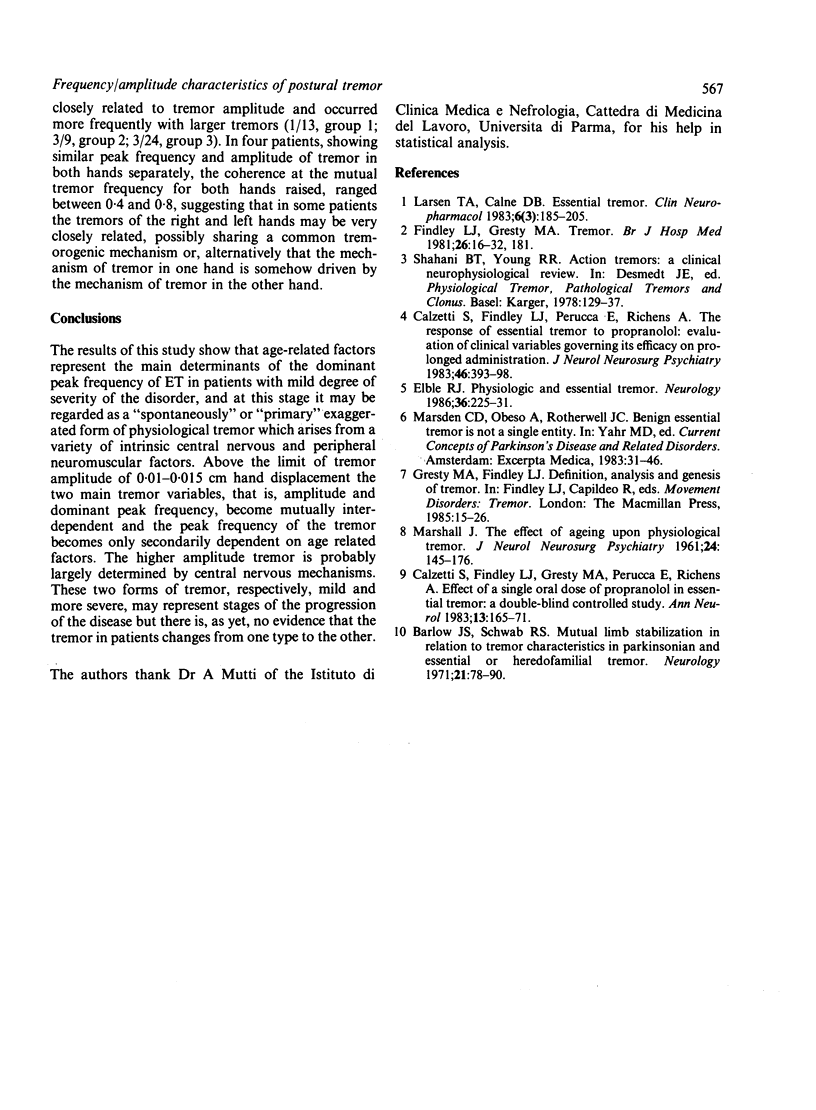
Selected References
These references are in PubMed. This may not be the complete list of references from this article.
- Barlow J. S., Schwab R. S. Mutual limb stabilization in relation to tremor characteristics in parkinsonian and essential or heredofamilial tremor. Neurology. 1971 Jan;21(1):78–90. doi: 10.1212/wnl.21.1.78. [DOI] [PubMed] [Google Scholar]
- Calzetti S., Findley L. J., Gresty M. A., Perucca E., Richens A. Effect of a single oral dose of propranolol on essential tremor: a double-blind controlled study. Ann Neurol. 1983 Feb;13(2):165–171. doi: 10.1002/ana.410130210. [DOI] [PubMed] [Google Scholar]
- Calzetti S., Findley L. J., Perucca E., Richens A. The response of essential tremor to propranolol: evaluation of clinical variables governing its efficacy on prolonged administration. J Neurol Neurosurg Psychiatry. 1983 May;46(5):393–398. doi: 10.1136/jnnp.46.5.393. [DOI] [PMC free article] [PubMed] [Google Scholar]
- Elble R. J. Physiologic and essential tremor. Neurology. 1986 Feb;36(2):225–231. doi: 10.1212/wnl.36.2.225. [DOI] [PubMed] [Google Scholar]
- Findley L. J., Gresty M. A. Tremor. Br J Hosp Med. 1981 Jul;26(1):16–32. [PubMed] [Google Scholar]
- Larsen T. A., Calne D. B. Essential tremor. Clin Neuropharmacol. 1983;6(3):185–206. doi: 10.1097/00002826-198309000-00002. [DOI] [PubMed] [Google Scholar]


